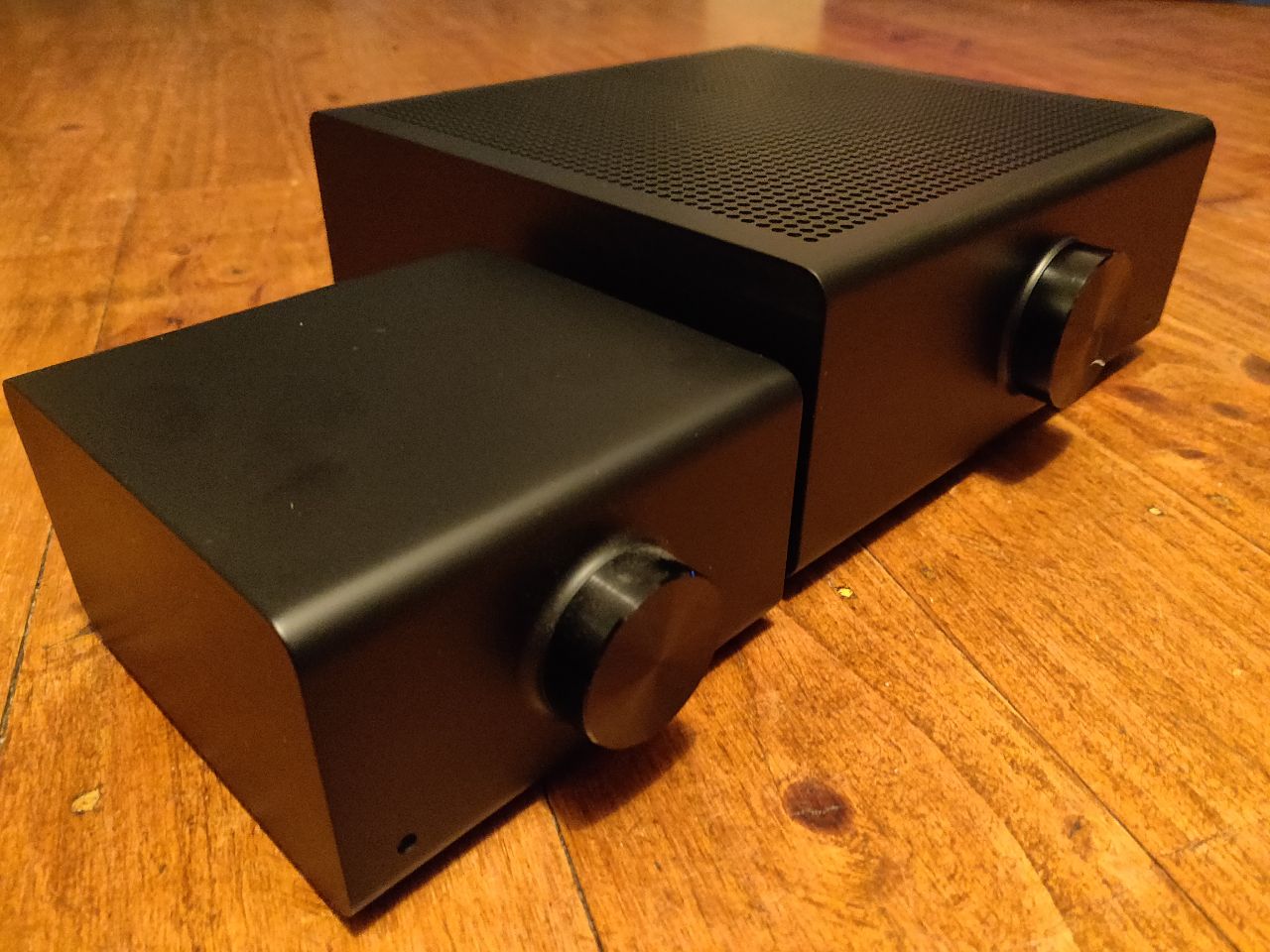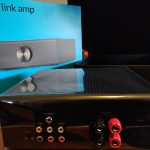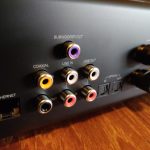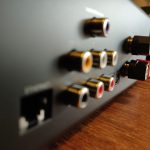The streaming speaker market is becoming flooded — there’s Google Home, Home Mini, Home Hub, various Chromecast options, various brands of speaker with Google Assistant built-i, and that’s before you get to the Amazon Echo range with Alexa built in… Phew!
Amazon have a full range of devices that match the Google Home series. The Echo, Echo Dot, Echo Spot, Echo Show and Echo Plus and you’ll need one of these to get the Echo Link or Echo Amp to interface with your daily life.
One of the continued themes of smart speakers is that they’re more focused on the smart than the speaker. The Echo Link and Echo Amp are (like the Sonos Amp) a move away from providing a smart speaker, to adding “smart” to your existing speakers giving you great sound as well as a voice-controlled smart interface.
Alexa – The other smart assistant
Alexa and I haven’t had the best history. In fact I’ve been pretty harsh on the capabilities of Alexa, in particular the voice recognition. That’s what a bad first impression does, it taints your overall feeling for the whole platform.
I’m pleased to say that since my last interactions with Alexa, she’s learned a lot. The voice recognition and the interactive responsiveness has improved so much that it feels like it’s not even the same service that I previously used.
It’s far more reliable than previous experience and was actually useful to me — although I’m not I would go as far as making it the hub for my home given the existing Assistant integrations I’ve already setup.
Echo Link
The Echo Link offers a perfect way to add streaming music to your existing sound system, allowing you to use your speakers and amplifier that you already own and use daily. The advantages of this are plentiful, starting with the sound quality since none of the low to mid-range smart speakers really have anything resembling decent sound.
I even went to the extent of using the 3.5mm output from the Echo Dot to check what the sound output was like and there is a noticeable improvement in using the link over the Dot. Whether that difference is worth the $160 difference, I’m not entirely convinced but when you’ve invested in a good set of speakers and amp – killing sound quality with lower-end input devices is somewhat counter intuitive.

When you’re dealing with a source device feeding to an existing sound system the amplifier, power output and quality of the speakers you’re using are all at the pointy end of that list. In fairness to the Dot, Link and Amp, I used the same speakers throughout testing.
The Echo Link is a physically small device that has a simple set of coaxial or optical throughput with the intent to use it as a source feed into your existing amplifier and speaker setup, or potentially if you want to with headphones as it has a 3.5mm port on the front of the device.
Connectivity to the Echo Link is possible via either an Amazon Echo voice speaker such as the Echo Dot or via the Alexa app on your phone and you’ll need this because the only control on the echo link is the volume. So the control is a little strange, if you ask Alexa a question about the weather or other news events – the Echo Dot answers, but as soon as you stream audio, the Link kicks in (provided it’s the default streaming output) and music starts booming from your chosen output.
That really is about it, it’s a simple way to get a higher quality stream of music to your existing music system. The limitations are that you have to use Alexa in some form. Whether that’s an Echo speaker of sorts, or via the app on your phone. If you’re using a speaker, you may want to consider grabbing at least a couple so you have controls over the music throughout your home.
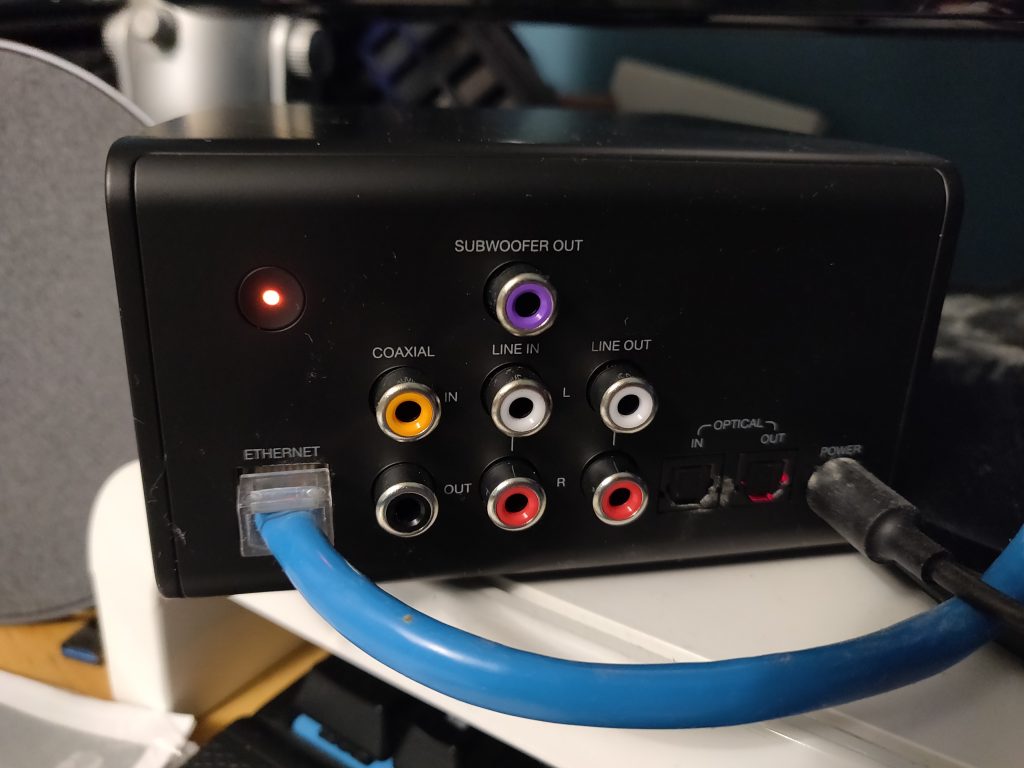
The other potential roadblock is that since Amazon and Google aren’t what you’d call close mates, you’re locked to using Spotify. If you’re nodding on those two caveats and the $299 price tag is in your budget then stop by Amazon Australia and pick one up!
Echo Link Amp
The Echo Link Amp is another step into more control for your audio. That being said you still need either Echo speakers around your home for the voice control, or Alexa on your phone. Your Alexa device will answer your questions, but the amp will handle sound output to your powered speaker setup.
The Echo Link Amp is designed to be the centre of your home audio rig. A complete replacement for your existing amp and plugged into your speakers which (from personal experience) can cost a significant amount of money.
At $459 on Amazon Australia, it’s not a cheap investment on the surface but could utilise a far bigger investment you’ve previously made in those speakers earlier mentioned.
The basics are the same though, it’s controlled through either the Alexa app on your mobile device or an Echo speaker (whatever form that takes) in your home. It too, covers a wide range of suppliers in terms of streaming: Spotify, Apple Music, iHeartRadio and TuneIn Radio.
You can use either Wi-Fi or Ethernet to connect to your home network. This is a very clever design decision in my eyes, not everyone has Ethernet running through their home and not everyone is happy to use Wi-Fi for permanently fixed items in their home that needs a solid connection to the Internet.
Once connected, which is an extremely simple “follow the bouncing ball” type process on the Alexa App you’ll simply need to tell Alexa to play some music or radio and the output. On paper the setup works very well and in practice it does too but…
I was actually a little bit disappointed in the sound output from the Echo Link Amp. Not because it was poor quality, but because it wasn’t noticeably better than a $90 amp from Jaycar that I already had hooked up to those speakers. But the cheap amp doesn’t have the flexibility the Echo Link amp does.
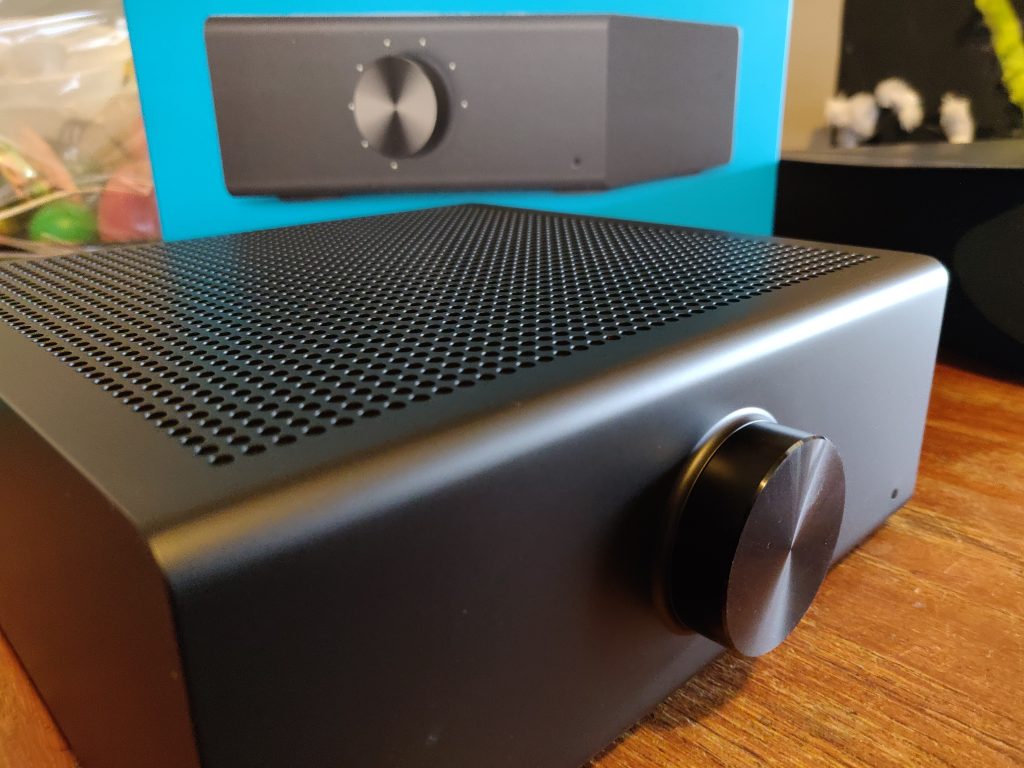
In what I’d like to think is a pretty controlled test I used the same speakers, same physical location for the speakers (so the acoustics played no part in this) and same music stream there was very little to pick between the two until you turn the sound way up. This was when the extra $370 showed up in the sound produced in far cleaner mid-range sound and punchier bass.
In complete fairness, the sound was generally pretty good.
The struggle I have with the Echo Link Amp is seeing where it fits in the market and I can’t help but feel it’s a pretty small market they’re aiming at. Let me explain my thoughts on this:
- An audiophile is going to spend three to five times the dollars of the cost of this amp on an extremely high quality device.
- A general home user is likely to be happy with the Amazon Echo or Echo Plus sound output, of course you can add Sonos and Google Home range of speakers in there.
- You’re unlikely to buy a $460 Amplifier without having a hole in your setup it fits perfectly in

So it’s not for someone setting up their home audio from scratch, it’s not for audiophiles and it’s not for a general home user. If you’ve got a decent set of speakers around you don’t want to part with and an ailing Amp then this may be the buy for you. It’s not a bad amp, it’s just not great but on further reflection the advantage of the Echo Link Amp is by far the convenience. It’s very easy to set up, it’s very easy to use and (provided you have Echo speakers and Spotify) it’s very easy to integrate into your home and digital lifestyle.
Should you buy one of these?
Given the dollars involved and the results I got, I’m inclined to say yes to the Echo Link but no to the Echo Link Amp and there’s a number of reasons for that — but there are some variables on the answer depending on your individual needs and setup.
Looking at both the devices they have some really good positives to explore, depending on your needs there may be a cheaper option that will do the job for you.
Echo Link
This is a great device to add streaming functionality to an existing audio setup. The Echo Link will easily drop into an existing sound setup provided you have a source input remaining free and deliver good quality audio to you. You’ll get more from your existing, perhaps ageing setup which may otherwise require replacement.
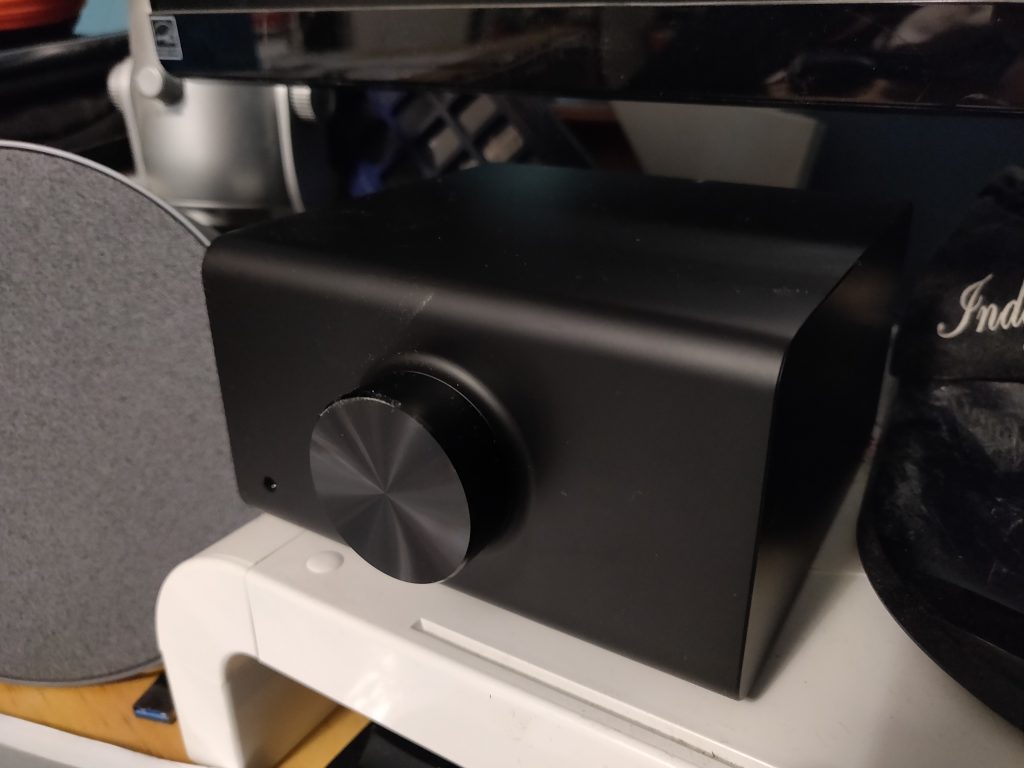
Echo Link Amp
The Echo Link Amp is just as easy to setup and will drive your existing speakers with solid and reliable sound but perhaps at a price that will push many potential buyers elsewhere. The big draw card to the amp is simplicity and throughput options available and it can integrate largely into an existing speaker setup to replace an ailing amp.
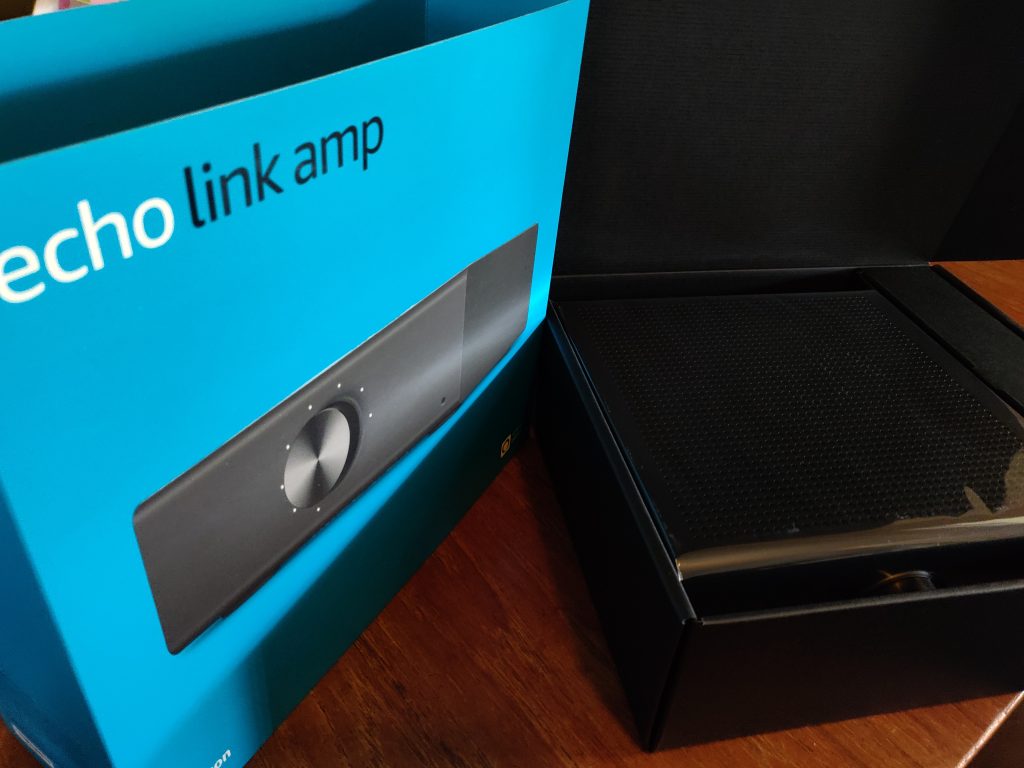
I also have some issues in terms of broader functionality when you enter the walled garden of Amazon and as earlier mentioned, audiophiles aren’t even going to give this more than a passing glance.
I’m too deeply invested personally into the Google ecosystem to go changing to Alexa.
The functionality of both deliver what they promise on paper, so if you’re looking for a device that either of these fit in the hole in your life then look no further. They are without a doubt well built, quality devices that will go the distance in your digital life — just with very specific use cases.

